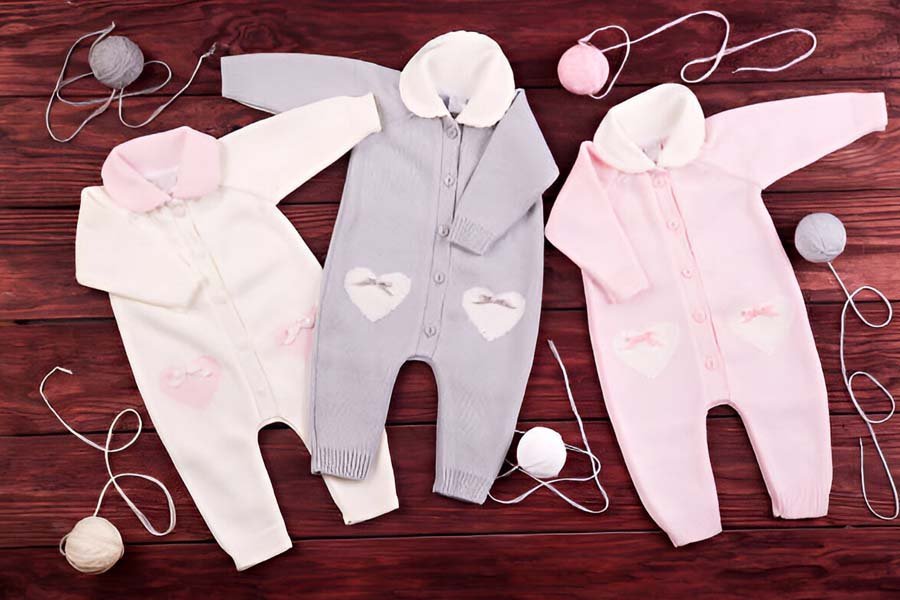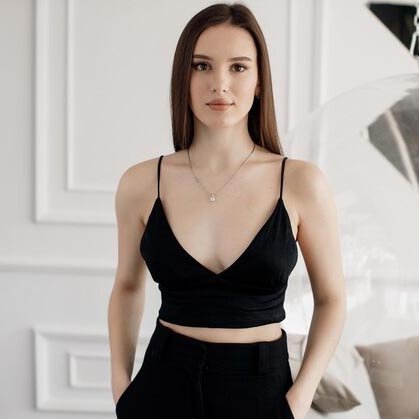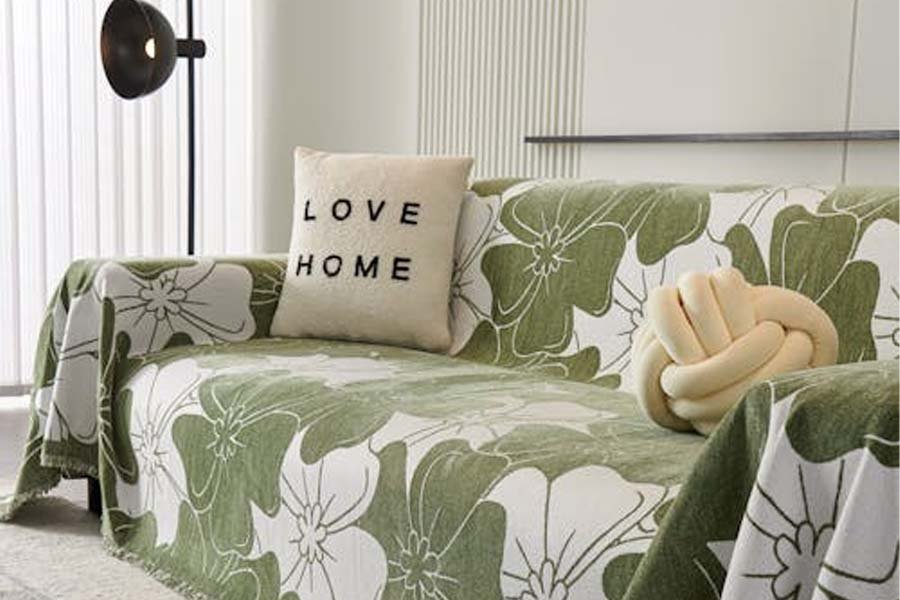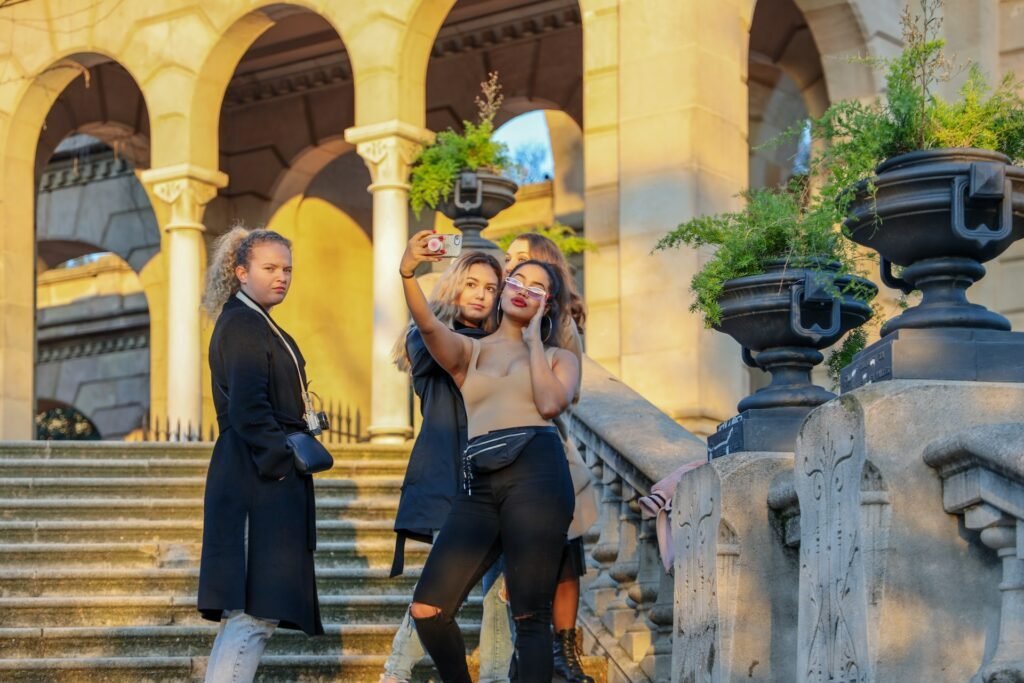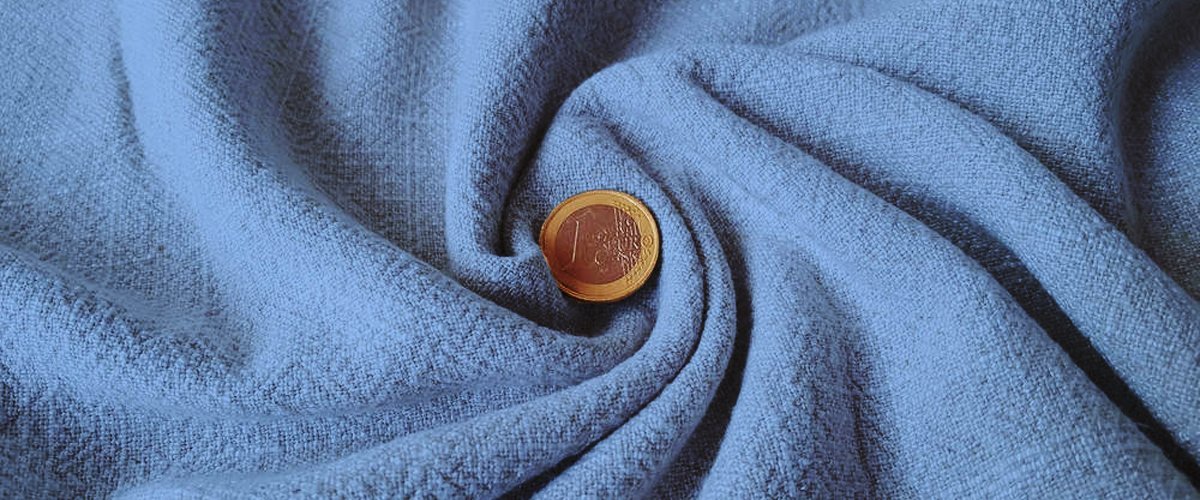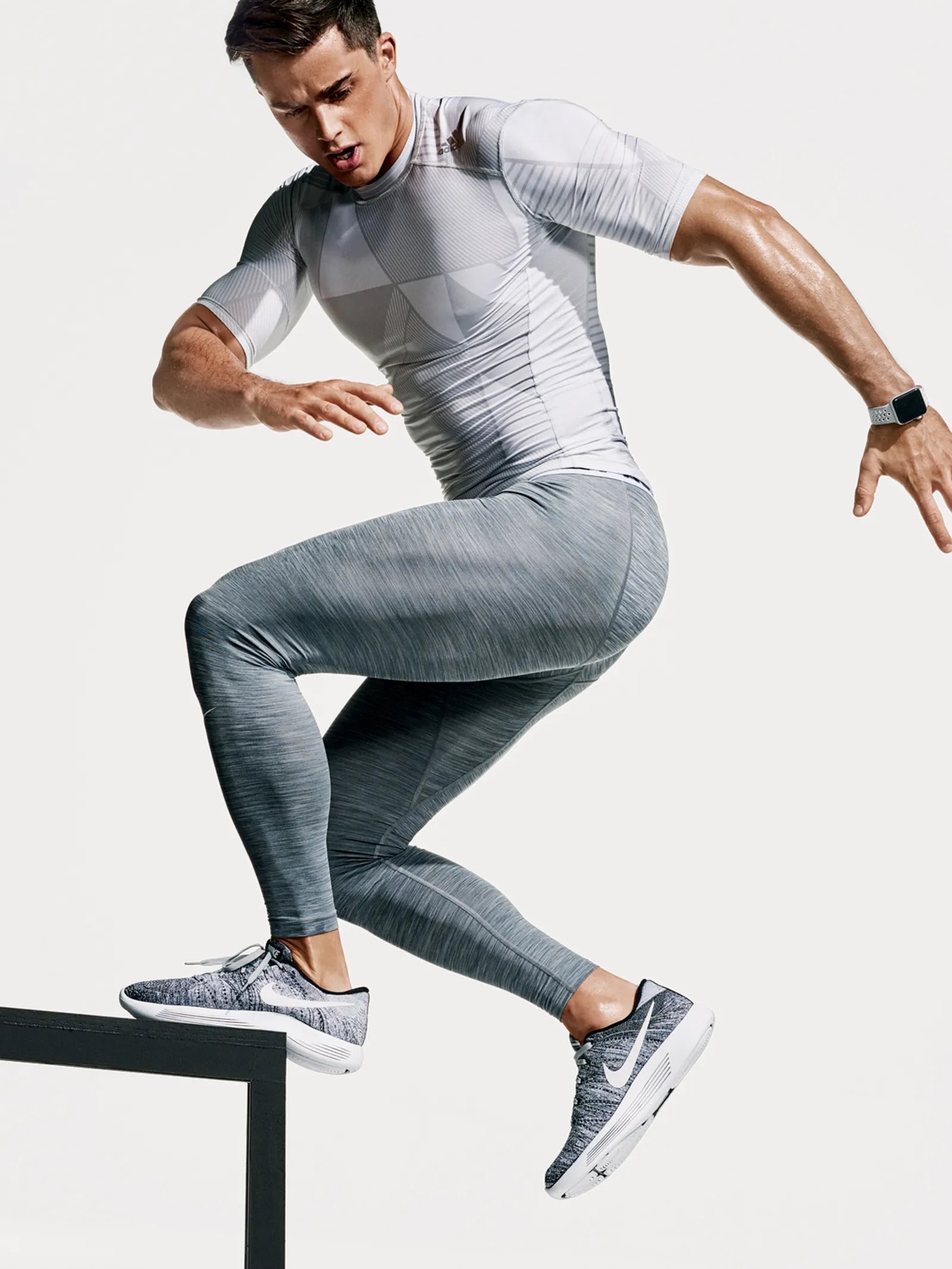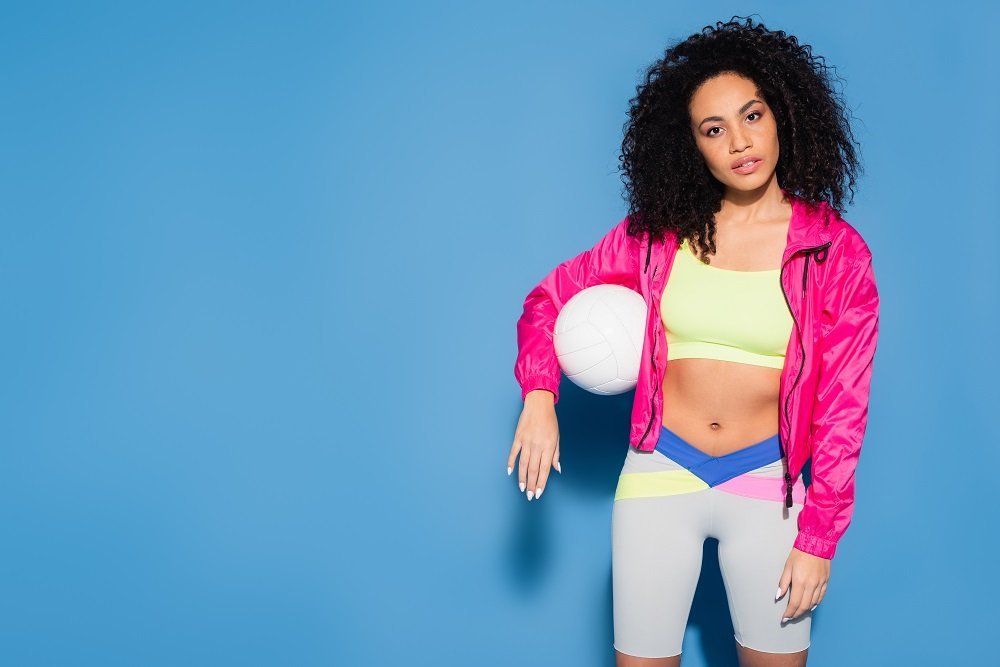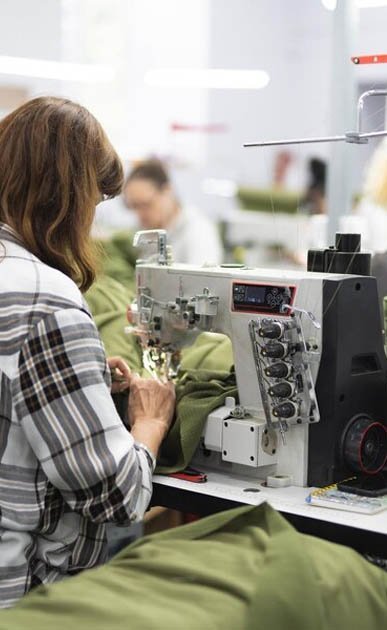Discover a curated collection of 52 unique dress types catering to women’s fashion preferences and diverse occasions, ensuring a perfect fit for every style and personality.
In this article, we will explore 27 more types of dresses and learn about the different types of dresses, their origins, and how to style them.
To explore a range of styles for dresses, check out Part 1 of our “52 Types of Dresses To Add To Your Brand’s Next Collection (Part 1)” to gain information you can use in your next fashion collection.
Different Types of Dresses for Women
1. Party Dress
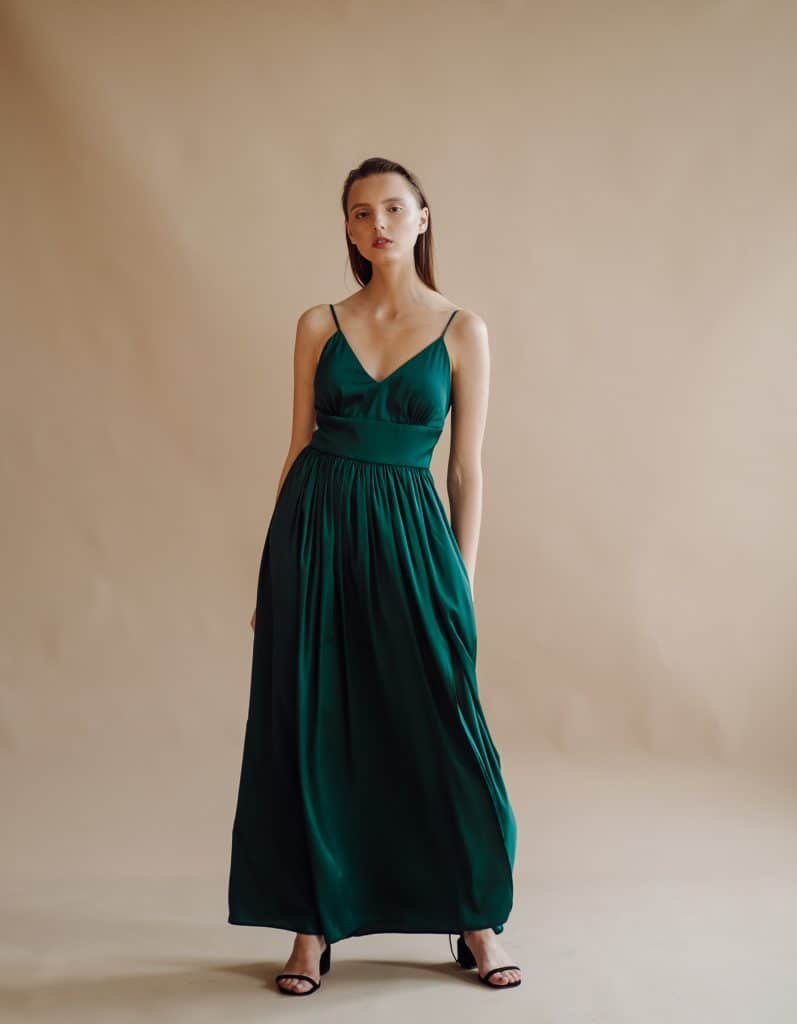
Source Site: Freepik
Party dresses, a staple of festivities and social occasions since the early 20th century, ooze elegance and beauty. These types of dresses provide comfort and grace since they are composed of abundant materials like silk, satin, chiffon, or lace.
These garments come in many styles, from timeless classics to trendy and daring choices. Luxury fabrics, intricate detailing, and flattering silhouettes are all hallmarks of party dresses designed to show individuality and confidence.
To wear a party dress with poise, consider the occasion and dress code, pairing it with statement jewelry, elegant heels, and a chic clutch.
2. Peasant Dress
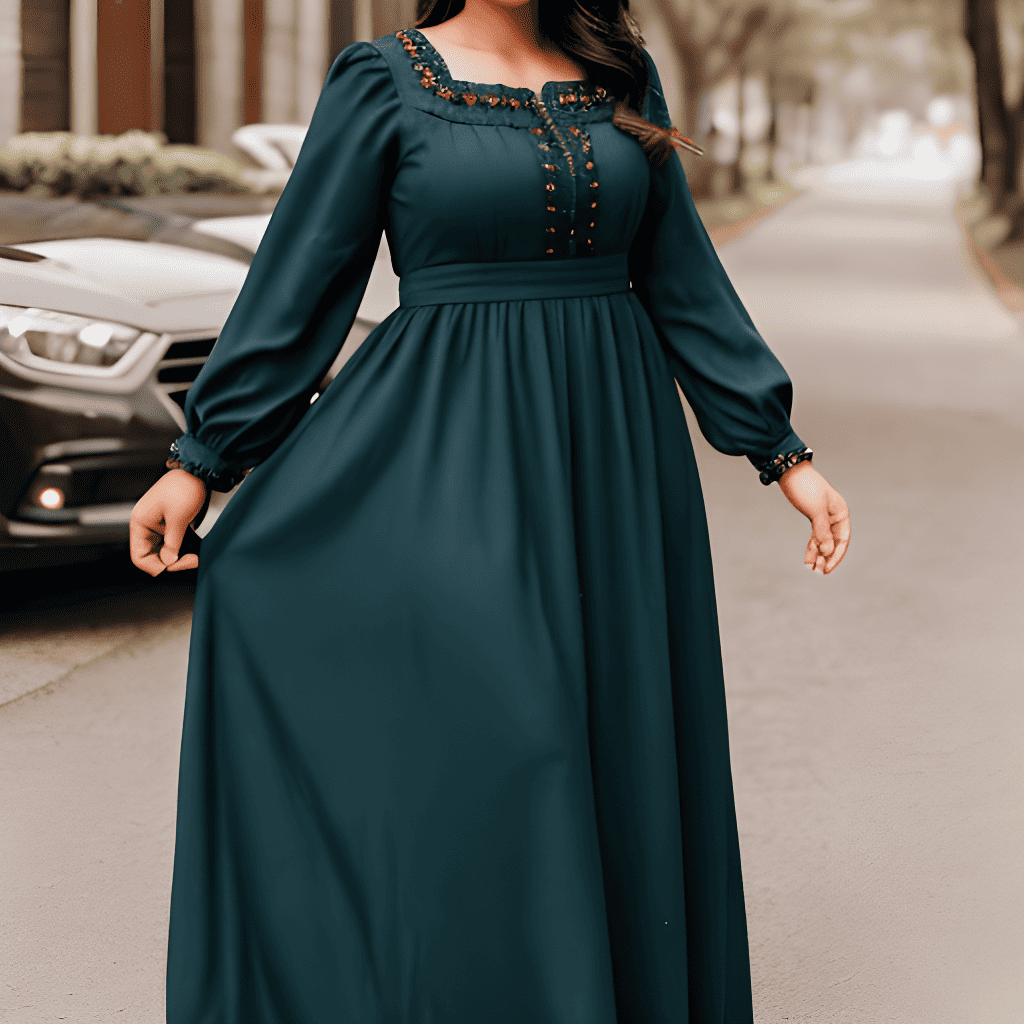
The peasant dress is a timeless and elegant piece that combines relaxation and refinement. Its plain appearance, which was inspired by the clothing worn by laborers, is now known for its intricate embellishments and billowing contours.
Made from breezy materials like cotton, linen, or rayon, it offers unrivaled comfort and embodies leisurely elegance.
To wear the peasant types of dresses with poise and style. Consider accessorizing with woven leather sandals, a wide-brimmed sun hat, wedges, or block heels. You can also pair it with a statement necklace or earrings and layer it with denim jackets or lightweight cardigans.
The peasant dress embodies sartorial timelessness and adaptability to various occasions and moods.
3. Pencil Dress
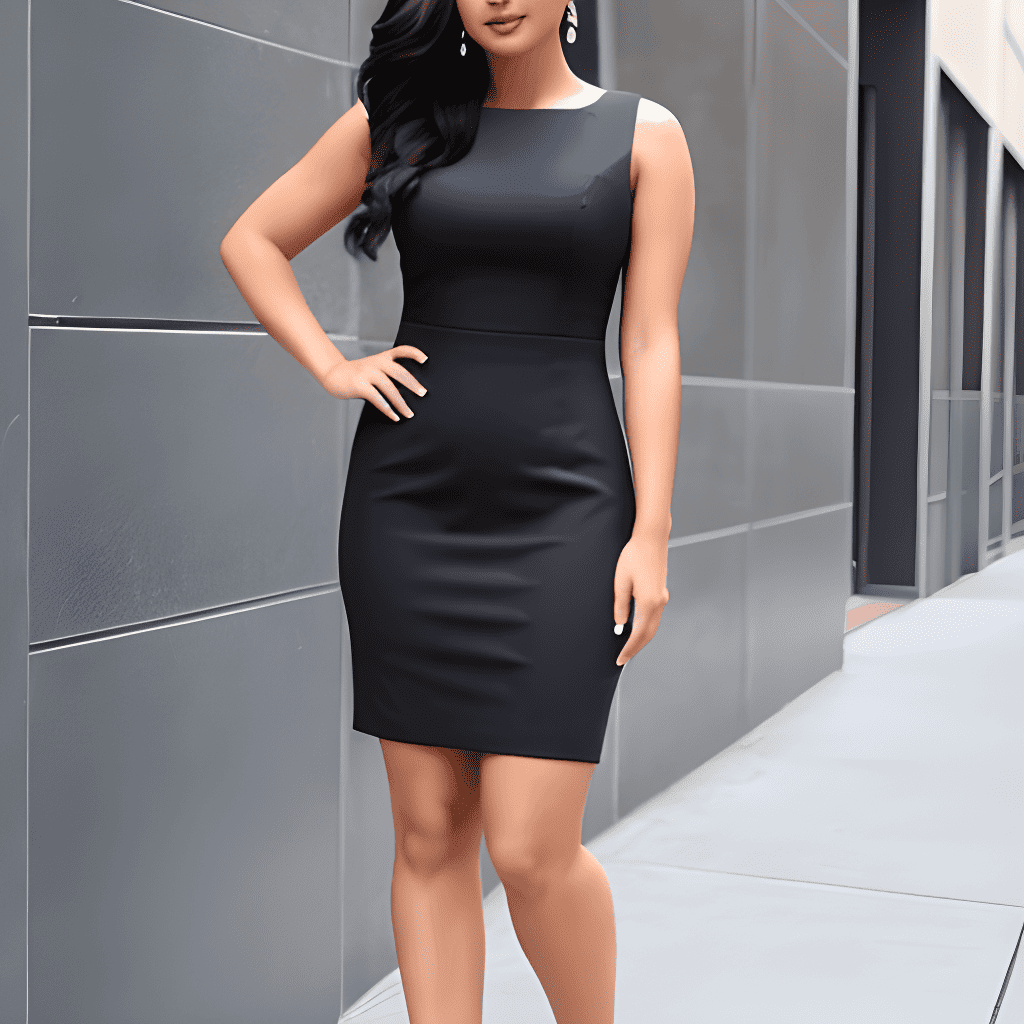
The pencil dress, originating in the 1950s, is a timeless and elegant garment that accentuates women’s curves and creates a sleek silhouette. Its narrow, straight-cut skirt skims the body, hugging the waist and hips, and ends just below the knee.
To wear a pencil dress, consider your body shape and select a suitable fabric. Opt for high-quality materials with stretch for a comfortable fit and ease of movement. A well-tailored pencil dress can be a staple in any wardrobe, radiating confidence and style.
4. Peplum Dress
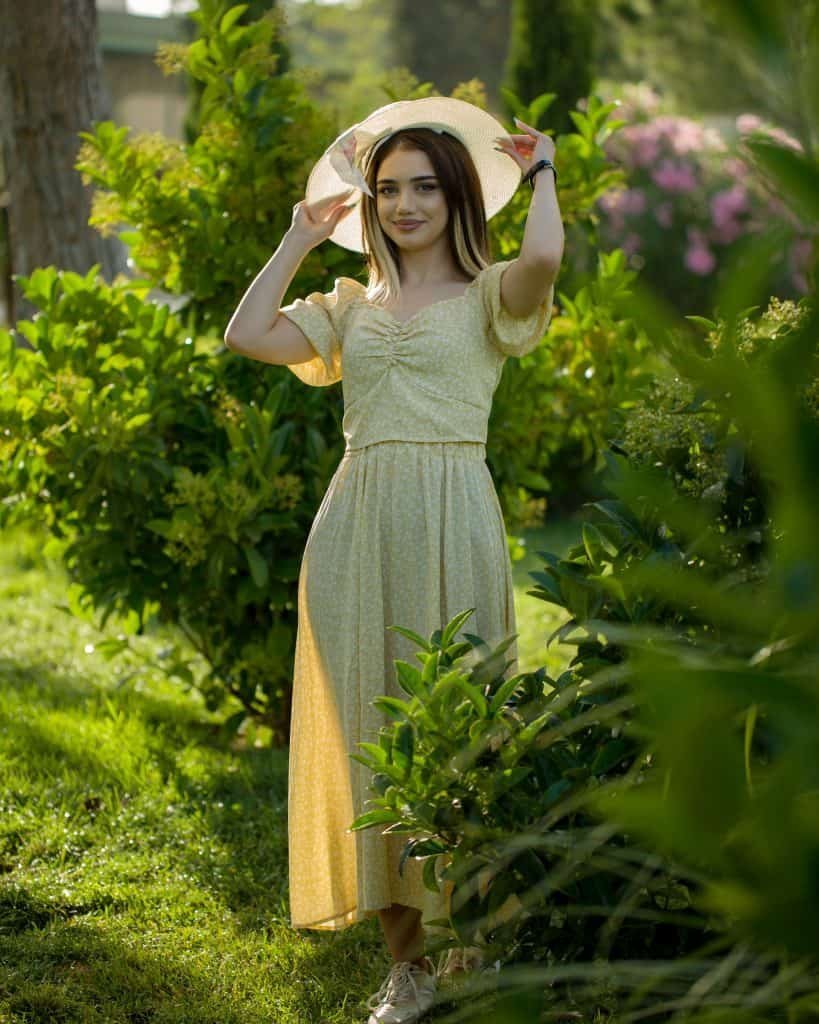
Source Site: Pexels.com
An elegant and feminine dress with a short overskirt or ruffle attached to the waist is known as a peplum dress. Originating in the 1940s, it has been popular for various occasions, from formal events to semi-casual gatherings.
These versatile types of dresses accentuate the waist and create a flattering silhouette, making it an excellent choice for highlighting curves.
To style, focus on the waistline, wear high heels or strappy sandals, and accessorize with simple necklaces or earrings. Pair the dress with denim jackets, lightweight cardigans for casual days, or a tailored blazer for formal occasions.
5. Pillowcase Dress
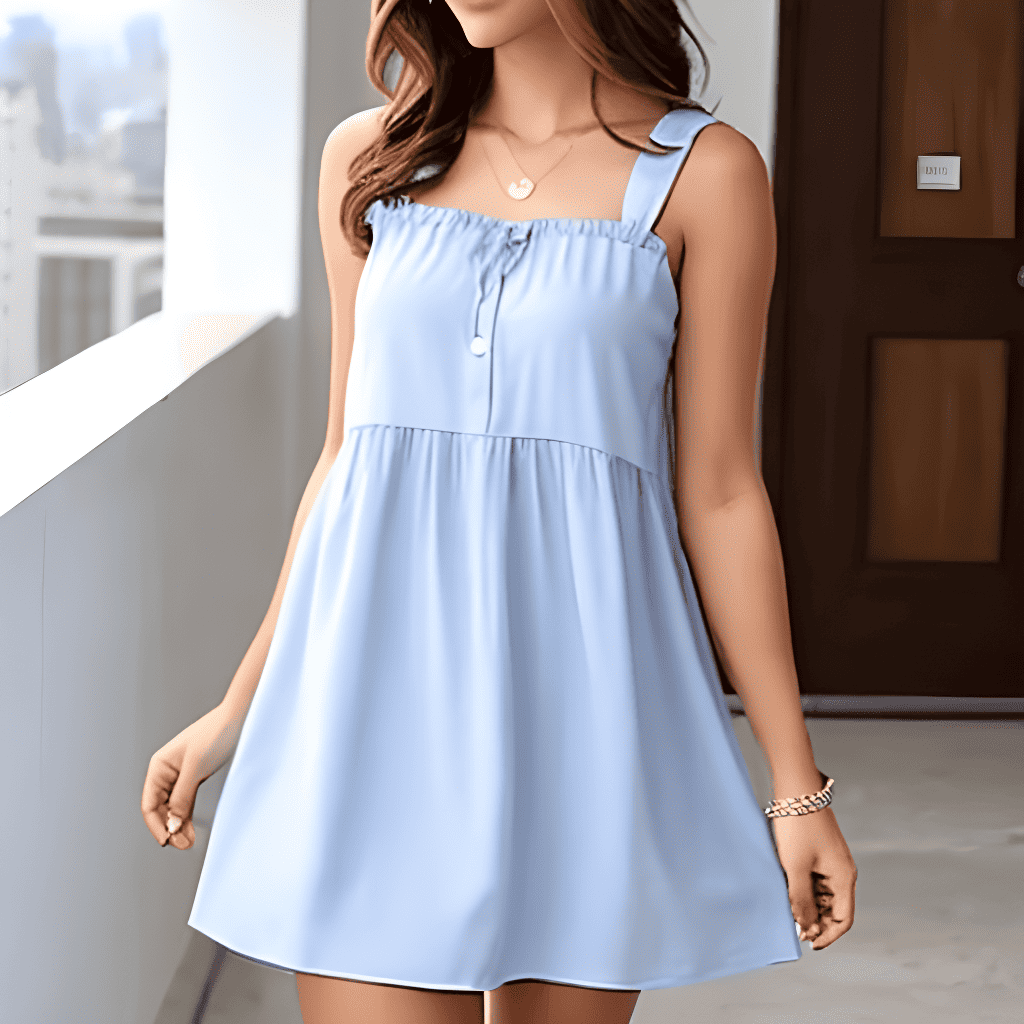
The pillowcase dress was a versatile and delightful style from the early 20th century when women created dresses for young girls using spare pillowcases.
This dress is ideal for warm weather and for active kids. The dress’s charm and appeal have endured through the years, adapting to modern fashion trends while retaining its timeless and vintage charm.
Let the dress drape gracefully, or add a belt to accentuate the waist. You can also pair it with a cute cardigan for a polished look.
6. Pinafore Dress
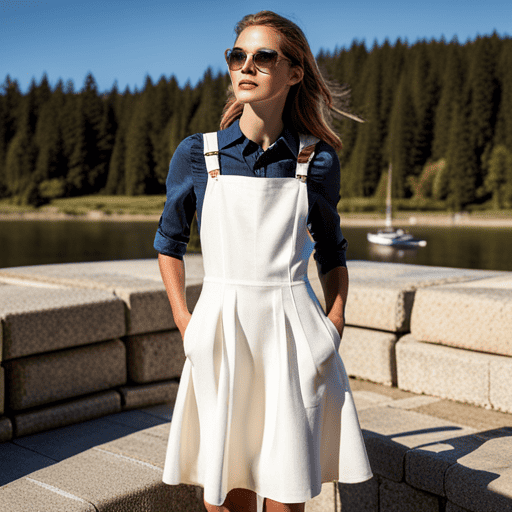
The pinafore dress is a classic, versatile garment with nostalgic appeal. It originated in the UK during the Victorian era and is widely regarded as a valuable choice for young girls.
It provides comfort, breathability, and durability and is made of cotton, denim, linen, or corduroy. The dress is appropriate for informal and formal situations and has an A-line or flared design.
To wear, pick a matching blouse or top, a collared shirt that is patterned or plain, a lightweight turtleneck, or a ruffled blouse. Complete the outfit with a choice of footwear, from casual flats or sneakers to dressier heels or boots.
7. Pouf Dress
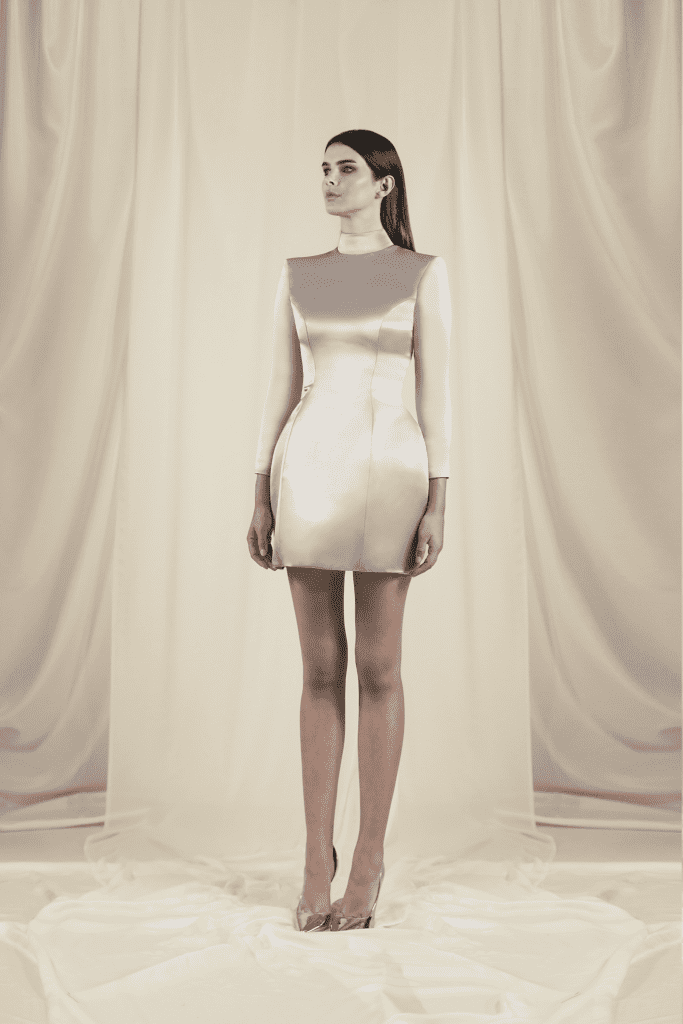
Source: Esmevie
The 1950s-era Pouf Dress is a stylish and odd outfit with a puffy, and exaggerated form. It is constructed from pricey materials like silk, tulle, chiffon, or organza. It draws inspiration from post-war fashion.
The flared skirt produces a striking impression, while the fitted bodice draws attention to the waist. This adaptable outfit is appropriate for formal occasions, social gatherings, and the red carpet.
To maintain focus, elegant and classic pieces are recommended. These types of dresses pair well with high heels to elongate the legs and maintain a balanced proportion with the voluminous skirt.
8. Princess Line Dress
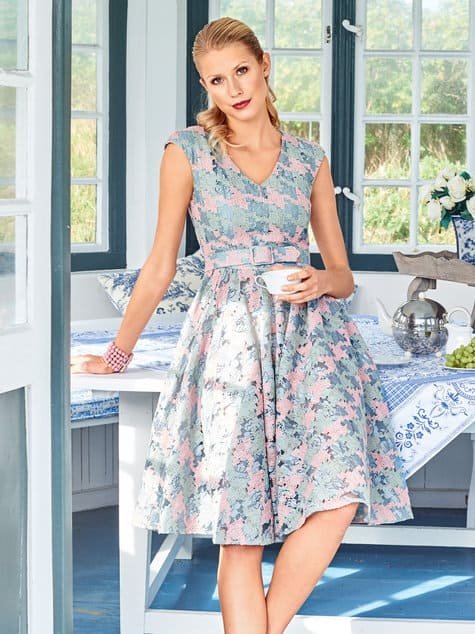
Source: Textillia
The Princess Line Dress is a timeless and elegant garment with a seamless, fitted design that follows the body’s natural curves without horizontal seams.
Originating in the mid-19th century, it gained popularity among fashion-forward women and is a staple in many collections. The Princess Line Dress is crafted from luxurious fabrics like silk, satin, or velvet. Modern interpretations may feature crepe, chiffon, or synthetic blends.
To wear these types of dresses with finesse, consider accessorizing with delicate jewelry and a pair of elegant heels. With proper styling, the classic dress can effortlessly transition from formal events to semi-formal gatherings, making it a timeless and valuable addition to any wardrobe.
9. Flapper Dress
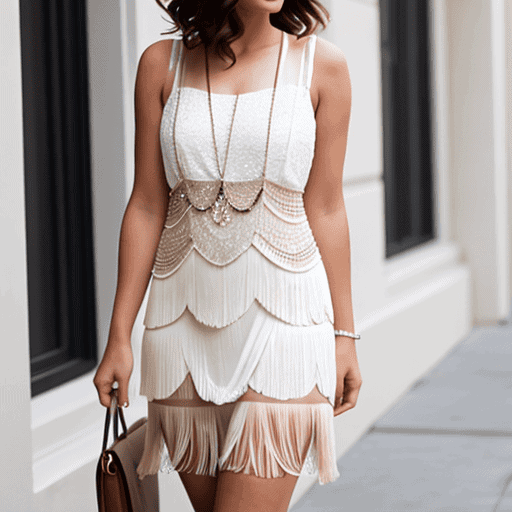
The Flapper Dress is a sleeveless, loose-fitting dress from the Roaring Twenties, showcasing the freedom and rebellion of women during the Jazz Age.
Originating in the 1920s, it departed from restrictive formal clothing, allowing women to freely dance, move, and express themselves. The flapper dress is made from luxurious materials like silk, chiffon, or satin, and the dress was adorned with intricate beadwork, sequins, and fringes.
To wear it, embrace the era’s spirit, pair it with stylish accessories, and emphasize the drop waistline. The Flapper Dress remains an influential piece of fashion history while remaining relevant in contemporary fashion.
10. Handkerchief Dress
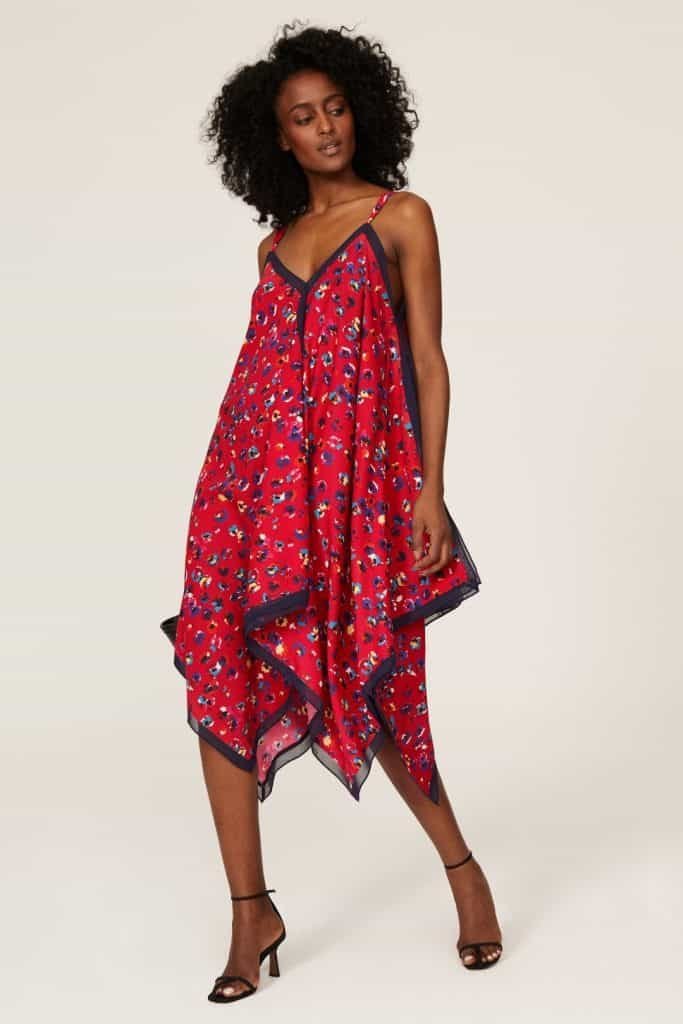
Source: Rent the Runway
The handkerchief dress is a fashionable and versatile garment with an asymmetrical hemline resembling the corners of a handkerchief. Originating in the early 2000s, it offers a contemporary and playful look suitable for casual outings, parties, and semi-formal events.
Crafted from lightweight, breathable fabrics like chiffon, silk, or cotton, it flatters various body shapes and allows for effortless movement.
To wear the handkerchief dress with flair, pair it with strappy sandals or wedges for a laid-back daytime look, minimalist jewelry, and a wide-brimmed hat for a more elegant look.
The beauty of these types of dresses lies in their adaptability, allowing you to style them according to your taste and event.
11. High-Low Dress
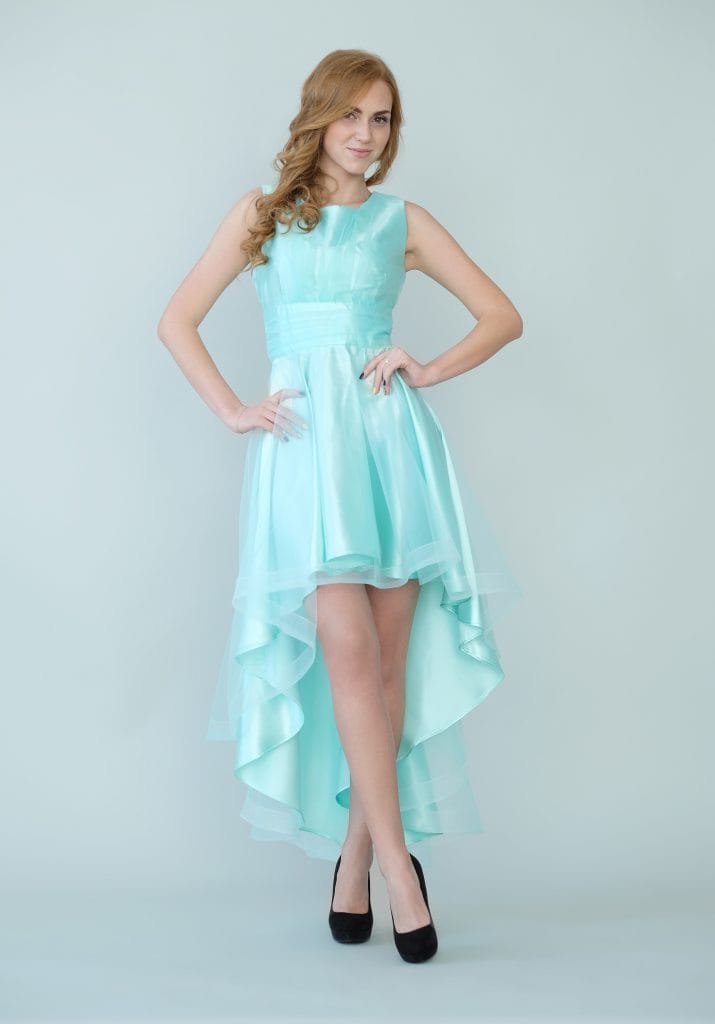
Source site: Freepik
The High Low Dress is a versatile and stylish garment with an asymmetric hemline, making it suitable for various occasions, from casual to semi-formal. Originating in the early 19th century, it has evolved, with designers reimagining and enhancing the concept to create modern and sophisticated variations.
To wear a high-low dress, consider the event’s formality and style, pairing it with flat sandals or ankle boots and minimal accessories.
For evening events, opt for heels, pumps, and statement jewelry. Remember to pay attention to your footwear choice, as the asymmetric hem draws attention to the legs.
Embrace the inherent playfulness of the high-low dress and confidently flaunt it with grace and poise.
12. Kaftan Dress
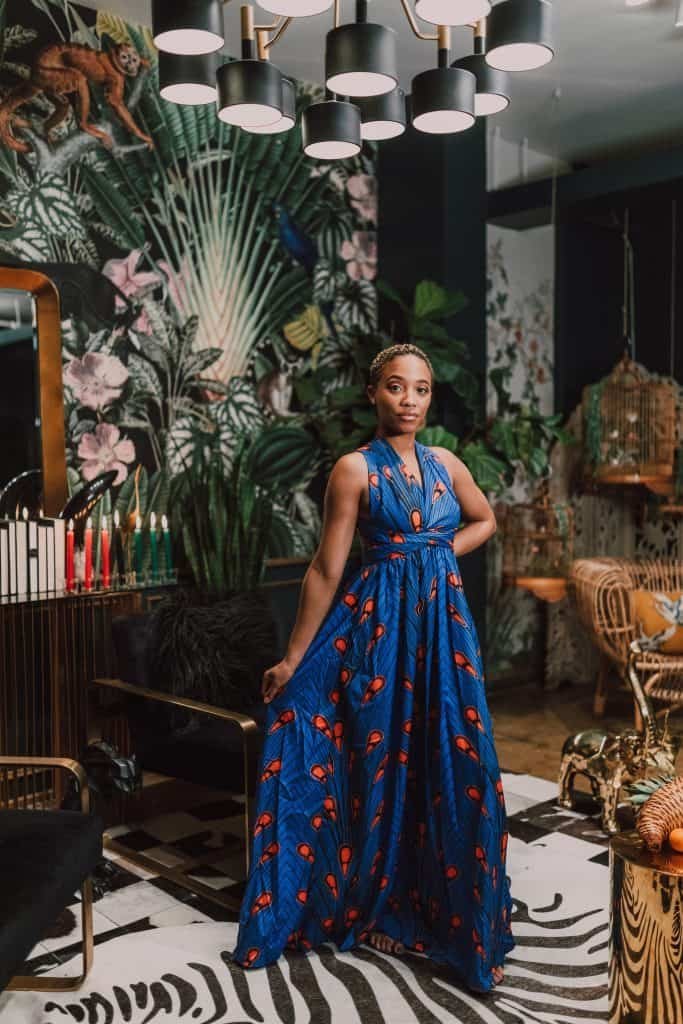
Source: Pexels
The kaftan dress is a graceful, loose-fitting ankle-length dress with broad sleeves that originated in the Middle East. These garments were made from luxurious silk, satin, chiffon, or cotton. It’s renowned for being cozy and adaptable.
Originating in ancient Mesopotamia and the Ottoman Empire, it symbolizes status and prestige. It has spread across various regions, taking on different styles and cultural influences.
These types of dresses can be cinched at the waist with a belt for a defined shape or worn loose for a bohemian look. For casual events, pair it with flat sandals and minimal accessories, while for formal occasions, opt for elegant heels and statement jewelry.
13. Kimono Dress
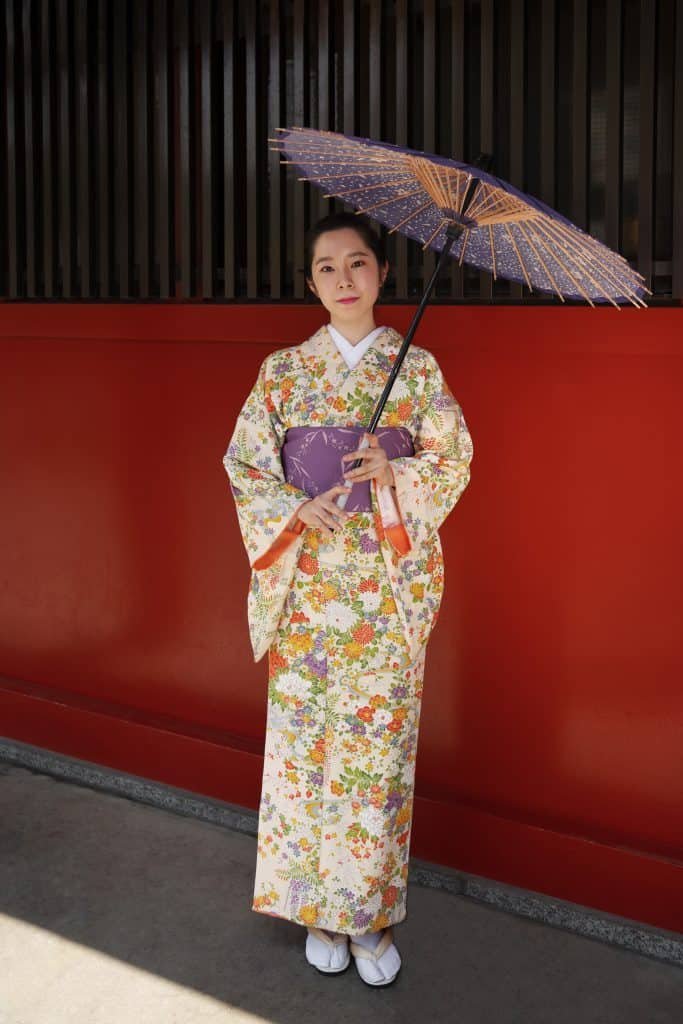
Source: Freepik
The kimono dress is a traditional Japanese outfit that blends the grace of the kimono with the contemporary form of a dress. This creates a flexible and chic item that personifies Japanese elegance and charm.
The dress has broad sleeves, a wrap-style fastening, and a fitted shape to emphasize the feminine body. It draws inspiration from Japan’s rich past. It comes with an obi belt or sash.
Depending on the event and the wearer’s preferences, the dress might be constructed of silk, cotton, or synthetic materials.
Follow the rules of proper Japanese attire by wrapping the left side over the right, adjusting the length, and adjusting the sleeves. This is done while donning a kimono dress. Adding the proper footwear and accessories to the ensemble completes the appearance.
14. Lace Dress
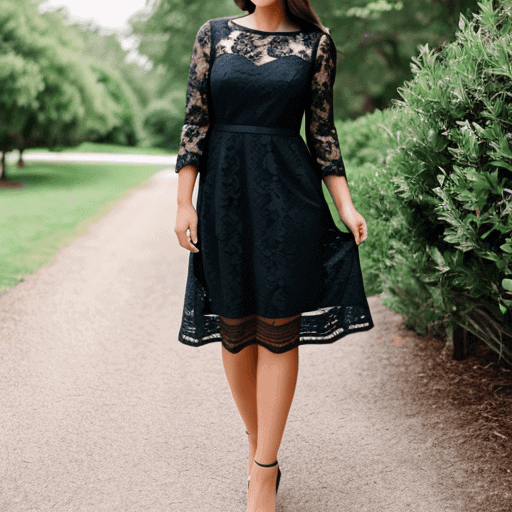
Lace dresses, originating in the 16th century, are a timeless elegance that blends delicate beauty with sophistication. These types of dresses are crafted using traditional and modern techniques. It has delicate openwork patterns that add femininity and charm to the garment.
Consider the occasion and the level of formality to wear a lace dress gracefully. For formal events, opt for longer, classic colors with understated accessories and elegant heels. If you are going for casual outings, go for shorter pastel shades or floral patterns.
These versatile and stylish options are essential for fashion-conscious individuals, ensuring effortless sophistication in various settings.
15. Slip Dress
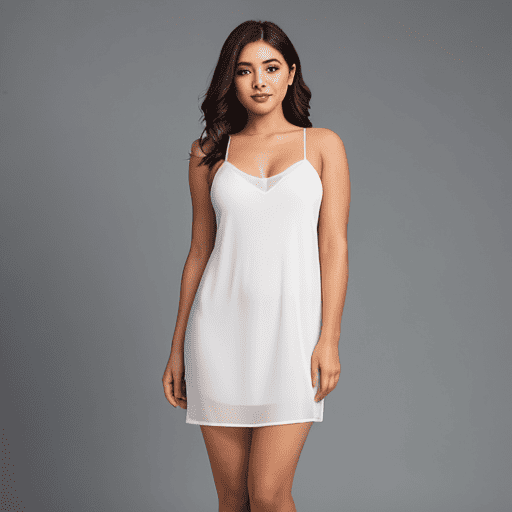
The classic and elegant slip dress has evolved from an undergarment to protect clothing from sweat and oils to a fashionable piece suitable for various occasions.
Originating in the early 20th century, it gained popularity during the 1920s, when women embraced relaxed fashion trends.
When wearing a slip dress, the key lies in layering and accessorizing. For an effortlessly chic daytime look, pair the dress with a light cardigan, denim jacket, casual sandals, or sneakers.
Contemporary designers continue reinventing the slip dress, incorporating modern elements while preserving its classic allure.
16. Smock Dress
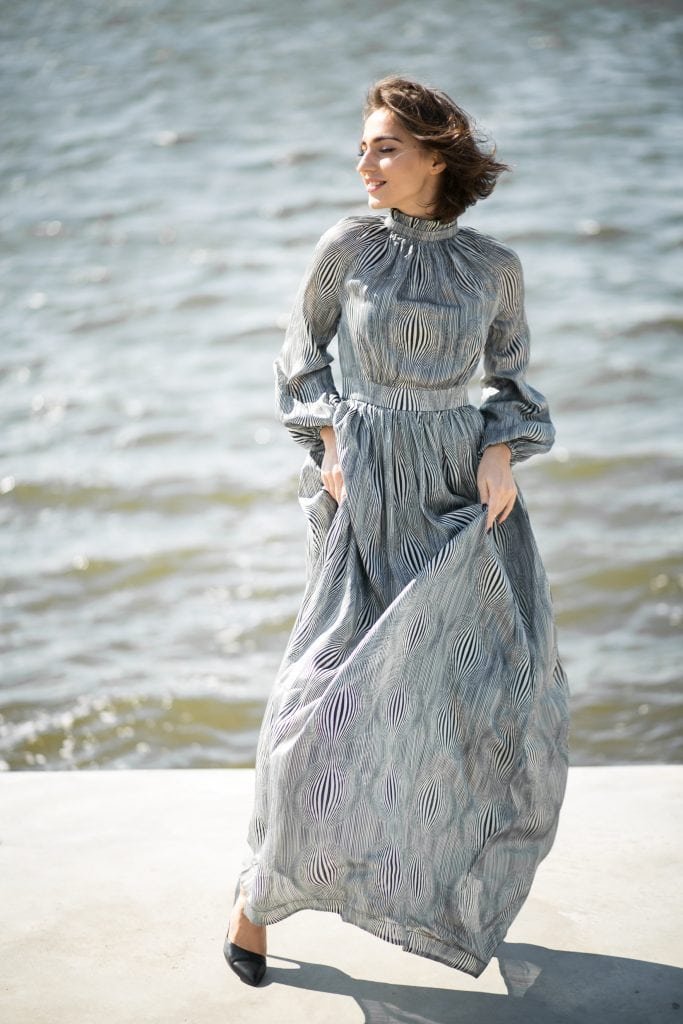
Source: Freepik
The smock dress, originating from rural and peasant clothing traditions, is a versatile and comfortable garment that combines style and functionality.
Originating from rural and peasant traditions, it features a loose, relaxed fit with a gathered or smocked bodice. It’s ideal for warm weather and casual occasions, and it’s made from lightweight fabrics like cotton, linen, or rayon.
To wear a smock dress fashionably, consider pairing it with minimal accessories and comfortable footwear, such as sandals or flats. The Smock Dress is a reliable choice that effortlessly combines comfort and style, making it a must-have addition to any fashion-conscious woman’s wardrobe.
17. Strapless Dress
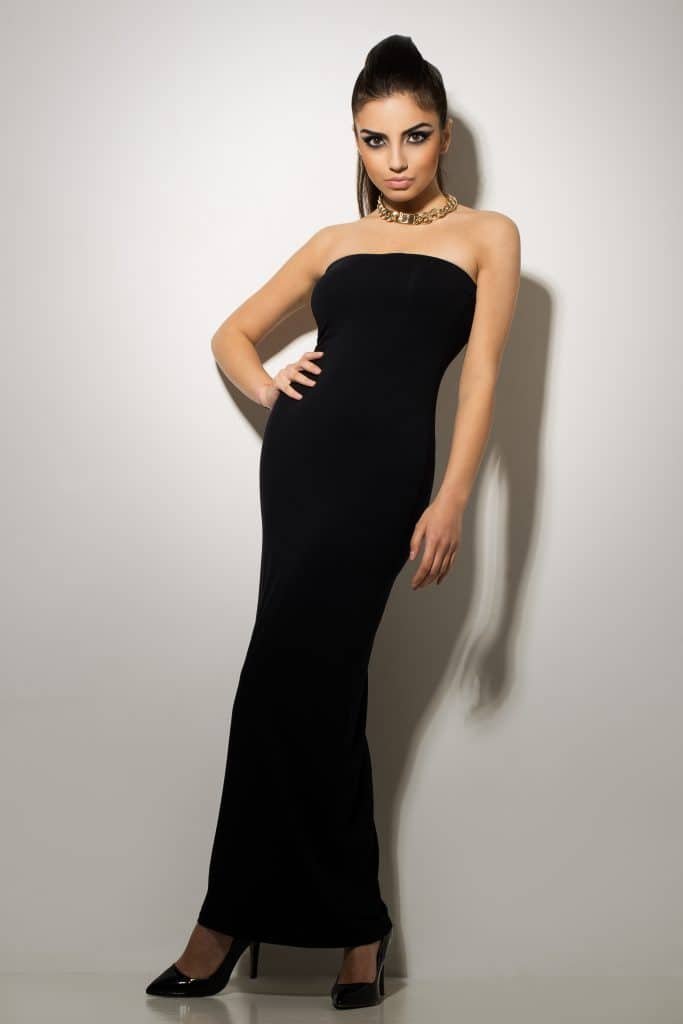
Source: Freepik
The strapless dress originated in the mid-20th century. It is a timeless and versatile garment with a sleek silhouette that flatters various body types. It first appeared in the 1950s and quickly became associated with refinement and femininity.
Attention to fit is crucial for comfort and confidence when wearing a strapless dress.
Wear a dress that suits your figure but does not restrict your movement. Some strapless gowns already have built-in support, which may be supplemented with a well-fitting strapless bra. Accessorize with statement jewelry and stylish heels or sandals for a sophisticated and graceful look.
18. Sundress Dress
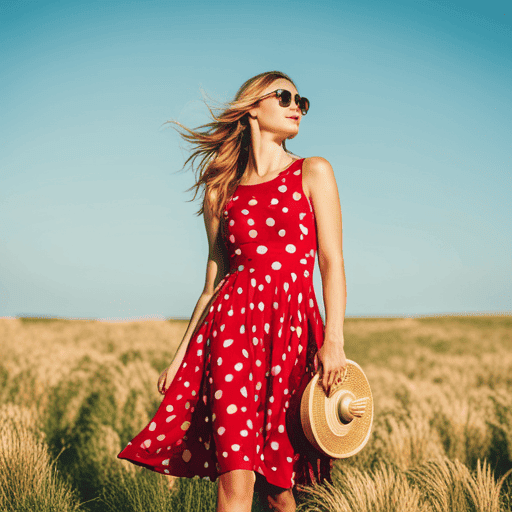
The sundress dress is versatile and stylish for warm weather and sunny days. The name “Sundress” derives from its association with summer and leisurely outdoor activities.
Originating in the early 20th century, it is a casual and comfortable outfit for women during summer vacations and outdoor events. The dress has evolved in design, patterns, and fabrics, but its essence remains the same: a relaxed and elegant dress suitable for warm days.
Some sundresses have a button-down or zippered front. The loose and flowy nature makes putting on and taking off easy.
Pair it with comfortable sandals or espadrilles for a relaxed look, or dress it with wedges and statement jewelry for a chic and effortless style.
The sundress dress symbolizes summer’s charm and laid-back elegance.
19. Sweater Dress
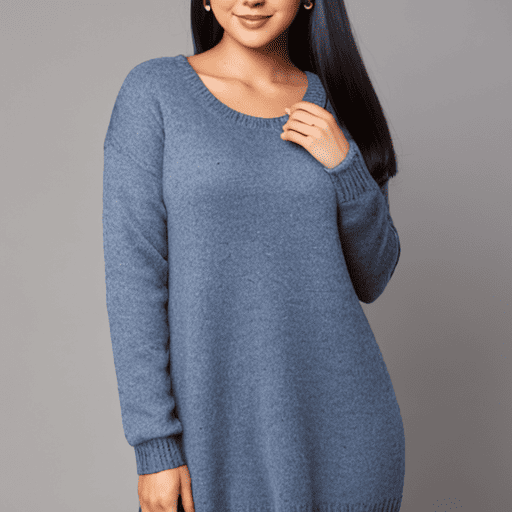
The sweater dress is a versatile and fashionable garment that combines comfort and elegance. Originating in the mid-20th century, it has evolved into a chic and sophisticated fashion item featuring soft and warm materials like wool, cashmere, or knit blends.
To wear a sweater dress stylishly, opt for a fitted silhouette, accessorize with a belt, pair with knee-high boots or ankle booties, layer with a structured blazer or coat, or wear a statement necklace or scarf. When styled thoughtfully, the sweater dress elevates your look and keeps you cozy and chic all day.
20. Swing Dress
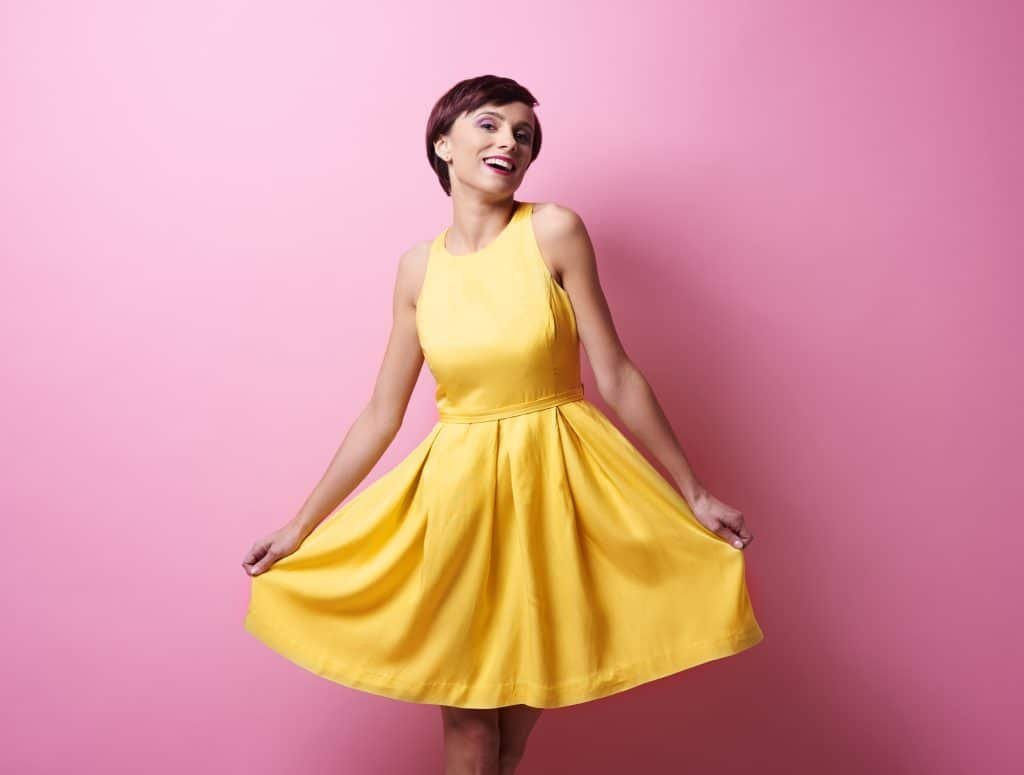
Source: Freepik
The swing dress originated in the 1940s and is a timeless and versatile garment with a flowing silhouette and graceful movement. Crafted from lightweight materials like cotton, rayon, or blended fabrics, it features a fitted bodice and a loose A-line skirt. Fabric choice is crucial for fluidity and effortless movement.
These types of dresses are often adorned with charming patterns and vibrant colors, making them a classic wardrobe staple. Wear it stylishly with classic pumps, kitten heels, ballet flats, a statement belt, or a denim jacket or cardigan.
The swing dress suits both dressed-up and laid-back ensembles, making it ideal for various occasions.
21. Tea Dress
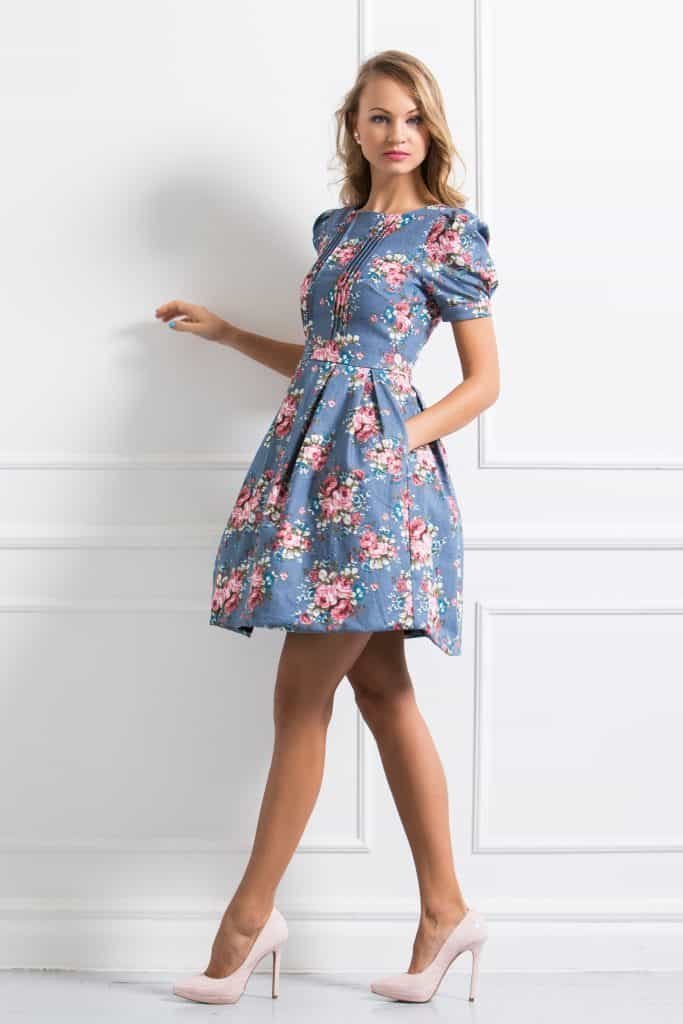
Source: Freepik
The tea dress originated in England in the early 19th century and is a timeless and elegant garment that exudes femininity and grace. Its knee-length or midi-length hemline, fitted waist, and flared or A-line skirt make it suitable for various occasions.
Traditionally made from lightweight fabrics like cotton, silk, or chiffon, the design has evolved to include various patterns, prints, and embellishments. Floral patterns and delicate details add timeless appeal.
To wear the tea dress with effortless sophistication, pair it with classic accessories like pearl earrings and a structured handbag. Pair it with a belt to accentuate the waistline and heels, sandals, or ballet flats for a relaxed vibe.
22. T-Shirt Dress
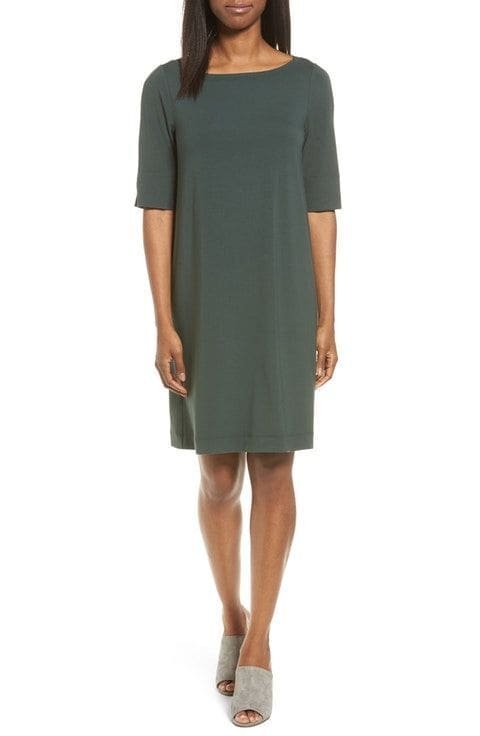
Source: Pinterest
This T-shirt dress combines elegance with casual comfort. Since the 1960s, it has become an everyday clothing item for women. Originally made from t-shirts, it is now available in various materials, cuts, and patterns to accommodate diverse preferences.
If you want to wear a T-shirt dress as a casual day or evening look, accessorize with sneakers or sandals and statement jewelry.
This versatile garment is appropriate for running errands and social gatherings. It allows individuals to effortlessly exude style and confidence while staying comfortable.
23. Tent Dress
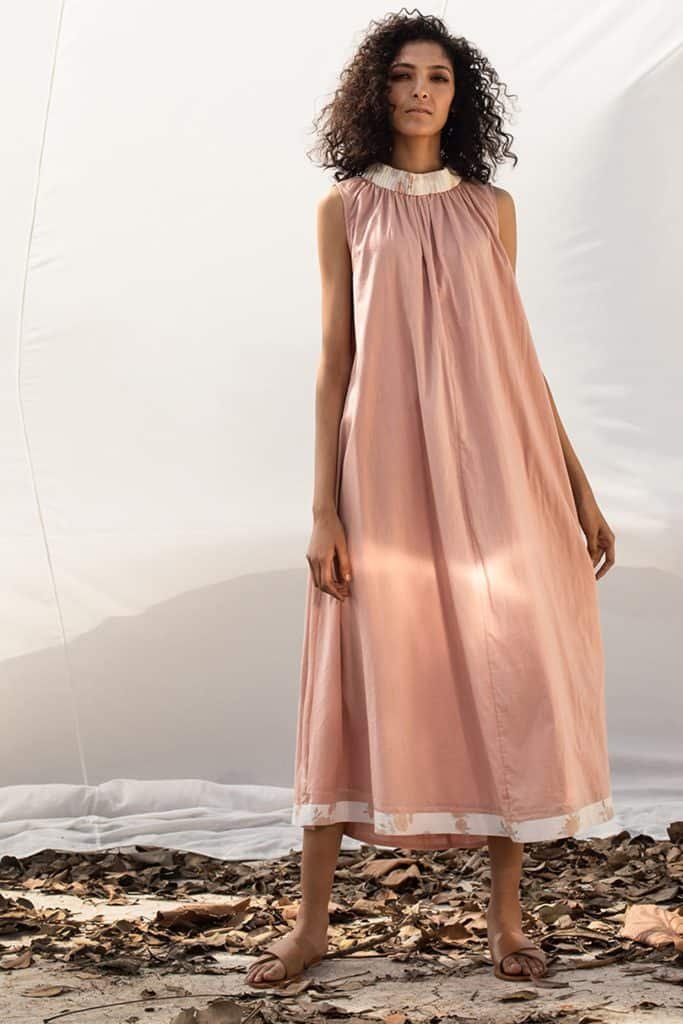
Source: Pernia’s Pop Up Shop
The tent dress originated in the 1960s as a counterculture fashion symbol and is a relaxed, comfortable, and stylish garment with a straight, wide cut.
These types of dresses are usually made from cotton, linen, silk, or blends, which are breathable and light, making them ideal for hot weather and casual events. The minimalist design prioritizes simplicity and ease, with modern adaptations featuring pockets or pleats.
Wear the dress gracefully with a waist-cinching belt, sandals, slip-on shoes, simple jewelry, or a wide-brimmed hat. Elevate the outfit with statement heels and a clutch for a timeless and versatile look.
24. Tunic Dress
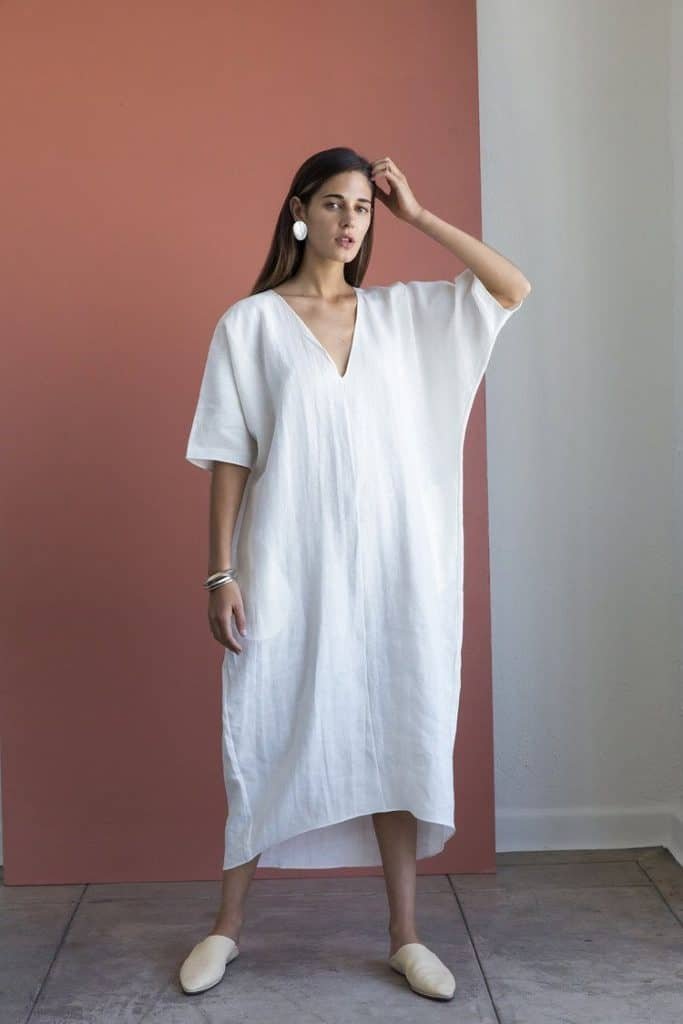
Source site: Pinterest
In ancient civilizations such as the Greeks, Romans, and Egyptians, tunics were worn by both men and women alike. At that time, tunics were simple, loose-fitting garments made from lightweight fabrics, serving as practical clothing for everyday activities.
Over the centuries, the design evolved and adapted to different fashion trends and social norms. The tunic dress has become famous in modern fashion for its comfort, simplicity, and versatility.
These types of dresses typically feature a loose and flowing silhouette that flatters various body types, making them a favored option for casual wear, beach cover-ups, and even semi-formal occasions.
The tunic dress is a statement of effortless elegance, allowing individuals to express their style while maintaining comfort and ease. Its adaptability to different fabrics, patterns, and embellishments has enabled it to stay relevant and continually reinvent itself in the ever-changing landscape of fashion trends.
Whether paired with leggings, belts, or worn on its own, the tunic dress continues to be a staple in wardrobes worldwide, embodying comfort and style.
25. Wedding Dress
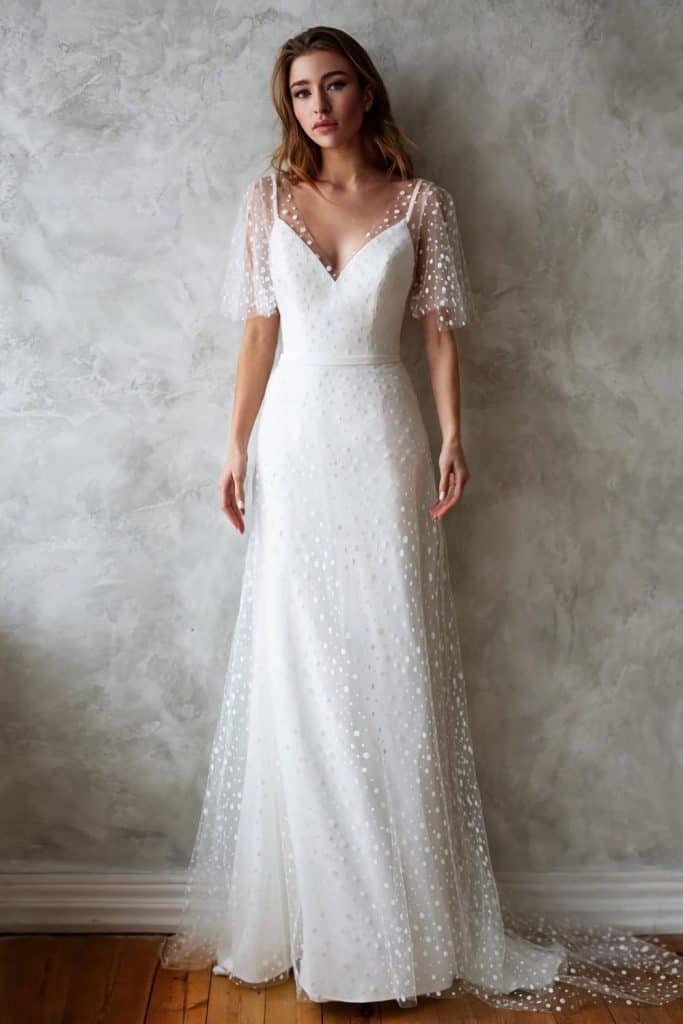
Source: Pinterest
The wedding dress symbolizes love, commitment, and elegance, representing the bride’s love and celebration. It has a rich cultural history dating back to ancient civilizations, where brides adorned themselves in elaborate attire to signify purity, wealth, and future prosperity.
Originally designed to reflect the prevailing fashion, wedding dresses have evolved, featuring luxurious fabrics like silk, satin, chiffon, and lace. Embellishments like beading, sequins, and embroidery add glamour and personalization.
Wearing a wedding dress requires special care and attention, with professional alterations needed for the perfect fit. The bride should wear the clothing confidently, embracing its symbolic meaning and enjoying every moment.
26. Wrap Dress
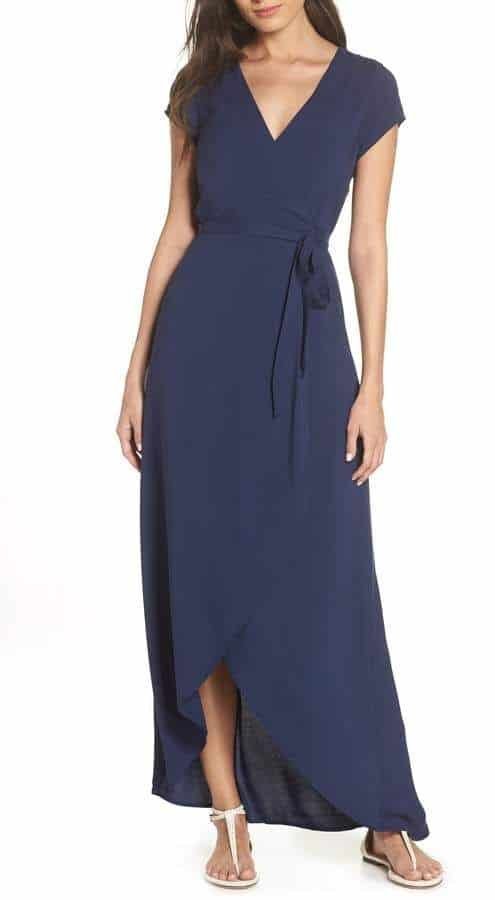
Source: Pinterest
The wrap dress is a timeless and versatile garment with an innovative design. It features a front closure that wraps one side of the dress across the other and ties it at the waist. Introduced in the 1970s by Diane von Fürstenberg.
It symbolizes women’s liberation and empowerment. It is comfortable, easy to wear, and made from lightweight, flowy fabrics like jersey, silk, or rayon.
The wrap dress can be dressed up or down with accessories and footwear, making it suitable for various events.
To wear these types of dresses elegantly, secure them at the waist with ties or a belt, adjust the neckline, and pair it with sandals or flats.
Elevate the look with statement jewelry, heels, and a clutch for formal events. Embrace the versatility of the wrap dress and showcase your style and grace with every outfit.
Conclusion
Understanding the different types of dresses empowers women to make well-informed fashion choices that align with their style preferences and the occasions they attend.
Dresses are an indispensable part of every wardrobe, and knowing the various styles and their significance empowers designers to create unique, appealing, and stylish collections that cater to diverse preferences and occasions.
Fashion start-ups can also take a strategic market position by understanding various dress types, giving them a competitive edge and improving their chances of success.
To learn more about the other types of dresses, check out Types of Dress for Women – Part 1, and discover another exhaustive list of dresses for your reference.
Contact us now to learn more about the right fabrics to use for your dresses!



